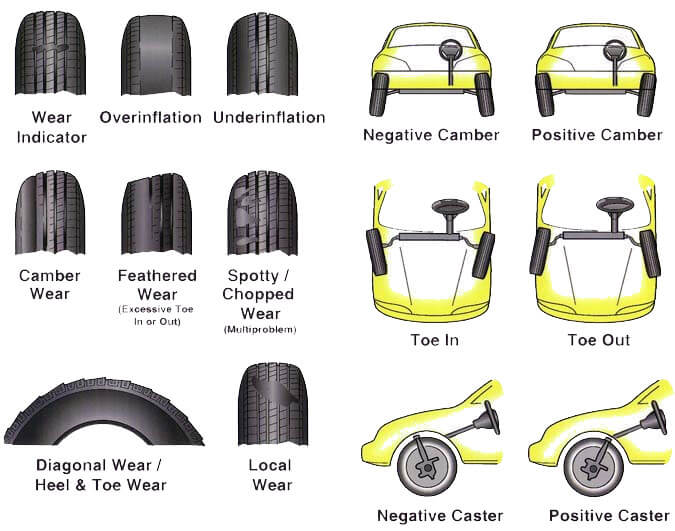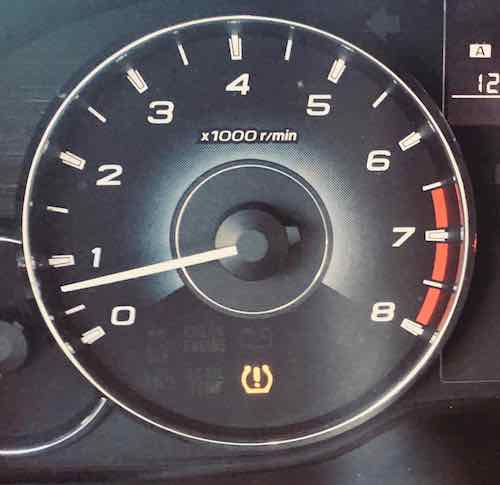Posted on 7/31/2014
What should the tire pressure be on my car? Question posted by Janet W. regarding her Lexus RX350. We are headed to tahoe for summer break and want to make sure our tires are properly inflated. Can you tell us the easiest way to find out what is the recommended tire pressure is on our vehicle? Often times we get the question, what is my vehicles recommended tire pressure? The truth is that all cars require different tire pressure but we will give you the general rules below. Where do I find the recommended tire pressure for my vehicle? Most vehicle manufacturers require a tire pressure of 32psi to 36psi on cars, SUVs, and light trucks. If you want to find the exact tire pressure for your car, check the following places: Sticker/decal in the glove box Vehicle owners manual Sticker/Decal in the driver inner door edge/door jam Sticker/Decal in the passenger inner door edge/door jam Sticker/Decal inside the fu ... read more
Posted on 7/26/2014
How do I get the fog off my headlights? Question posted by Barry G. regarding his Acura MDX "How do I get the fog off my headlights? The headlights on my MDX are getting foggier by the day. I am concerned that it could cause a safety issue with my night time driving." Why are my headlights cloudy? Why are my headlights yellow, hazed, or cloudy? Is there something you can do to make them brighter? Headlights are not only a cosmetic concern but should be considered a safety issue. Let's start by explaining why your headlights look fogged or hazed. About 20 years ago, vehicle manufacturers switched from glass headlamps to plastic headlight units. UV rays, road grime, and chemicals react with the plastic and cause the ugly fog, hazed, yellow looking headlights.How do I get the fog off my headlights? There are many different methods and compounds you can use to ... read more
Posted on 7/24/2014

Why does my air conditioner have a musty smell? "I am writing into your repair mechanics to find out what is causing my air conditioner odor? My air conditioner has a musty smell that is typically noticeable for the first 60 seconds or A/C operation. After that duration it dissipates." Why does my air conditioner smell musty? Your car air conditioning smells bad because you probably have mildew or bacteria in the air conditioning system. We deal with the air conditioner smell often and will explain why it happens, how to clean the air conditioner and how to avoid it. This is not uncommon and has nothing to do with a leak in the A/C system but can cause you some discomfort from the smell and possible mold. How did my vehicles air conditioner get in this condition and start to smell? As the air conditioner begins to cool down, there are metal fins (the air condi ... read more
Posted on 7/1/2014
Why does my steering wheel shake when I hit the brakes? If you feel your steering wheel shake while you apply the brakes, you probably have warped or over heated, your front brake rotors. If you are not applying the brake pedal and the steering wheel still shakes, you may have another issue that should get checked out immediately. How did I overheat my front brakes? The steering wheel shake while braking is caused by overheated brake rotors. If the heat you generate while braking can't be dispersed, you will over heat and deform the brake rotors. Below is a list of what causes the steering wheel to shake if you are braking: Braking down long steep hills. Braking from high speed off of the freeway Resting your foot on the brake pedal If your previous brake job was not performed properly (when calipers and moving components are not properly serviced or lubed) Thin/worn brak ... read more
Posted on 6/26/2014
How often should I change my engine oil? Lynn, thank you for the question! On average the vehicles we work on at A+ Japanese Auto Repair are due for an engine oil and oil filter change every 5,000 miles or 6 months (whichever comes first). As a rule of thumb… If you are an extremely low-mileage driver you should change your engine oil and oil filter at least once a year. Every Car's Oil Change Interval is Different When you read the fine print about engine oil change intervals, you will discover that the factory recommended service interval will range from 3,500 to over 10,000 miles for an oil change. How often you should change you engine oil and oil filter depends on the driving condition and the type of oil that you use. Most of us think we drive under as "normal" driving conditions but we are actu ... read more
Posted on 6/23/2014

Question posted by Jim T. regarding tire rotations on his 2005 Toyota “Just curious, I noticed I am doing a tire rotation every 5,000 miles. What is the benefit of this? Thanks for the question Jim. Let me explain… First of all, what is a tire rotation? Rotating tires means moving them from one wheel location to another — from left to right or back to front, or even diagonally. At A+ Japanese Auto Repair when we perform a tire rotation we will rotate your tires from back to front. We have noticed when we rotate tires in any other manner some vehicles will start to pull to one side or the other. When we rotate back to front we eliminate this the majority of the time. What common items are diagnosed by tire wear? Here is a tire wear chart showing most of the common items we look for when inspecting tires during a tire r ... read more
Posted on 6/4/2013

The Ultimate Pre-Road Trip Checklist If you are heading out on a road trip, it is best to check over your car a least a few days before you travel. Don’t find yourself stranded on the side of the road or waiting for a tow truck… especially on a family vacation. 1. Check all exterior lights This is one of the easiest things to check before you take your vehicle on a road trip, but it is commonly forgotten. Turn the key to the “on” position and check the turn signals, brake lights, tail lights, low beams, high beams, and backup lights. The easiest way to do this is to have a friend or family member inspect the lights while you operate them. If you are unable to find a willing person to help you, back your vehicle up to a wall and watch for the reflection of the lights while you check all of the lights. 2. Check for fluid leaks Small fluid leaks on any car can easily turn into big ... read more
Posted on 4/24/2013

What to check when my car won't start This article discusses a few common reasons a car won’t start. We also describe a few things for you to check to save you money. All of these scenarios are assuming your turn the key to the start position. 1. There are no lights on the dash, there is no noise from the car Starter Motor If you need further help, please contact San Carlos Auto Repair Typically, this means that you have a dead battery. But before you call for a tow truck and tell them that your car won’t start, you should check your battery connections. Locate your vehicle battery and one at a time try to move the battery connections via twisting motion (there should be no movement at all). After that go try to restart the vehicle. Okay… still no luck?? Now it’s time to call the tow truck. 2. I hear one click, but still, the car won’t start When you get one loud click, that typically is the starter solenoid engag ... read more
Posted on 3/19/2013

Why is my tire pressure warning light on? When the tire pressure warning light is on solid, that means you have a tire with low pressure or you have a fault in your tire pressure monitor system (TPMS). Is it safe to drive with the tire pressure warning light on? If the tire pressure light is on, the car may not be safe to drive. Low pressure in the tire can cause an issue with the car's handling, risk of the tire blow out, damage the tire tread or sidewall, all which could cause loss of control of the car. What should I do if my tire pressure light comes on? We the following: 1. Pull your vehicle over to a safe spot away from traffic. 2. Visually inspect the four tires for signs of damage, wear, and if they look low. 3. Bring your vehicle to a station or shop where you can have your tire pressures checked. 4. Inflate your tire pressure to the factory recommended pressure (typically found listed on the driver's door jam.) ... read more
Posted on 10/19/2012
5 Tips to Save Gas We have explained 5 simple way for you to save gas while driving your vehicle. Learn when most of your gas is being used, how to avoid it, and ultimately save gas & money. 1. No heavy acceleration – This is where your car swallows up most of it’s fuel. Acceleration in general is where you are moving a few thousand pound vehicle from a complete stop to 35 miles an hour and beyond. If you accelerate reasonably you can see about 25% increase in fuel savings, try it for one tank! 2. Avoid using the air conditioning - Understandably, this is not-popular, but it is worth mentioning. When clients bring their vehicles in for service, the air conditioning is usually on the low setting. The air conditioning compressor is like a small engine and it takes extra fuel to run it. You will see a fuel savings of about 5-10% depending on the type of car. 3. Obey the speed limit - Most vehicles are ... read more